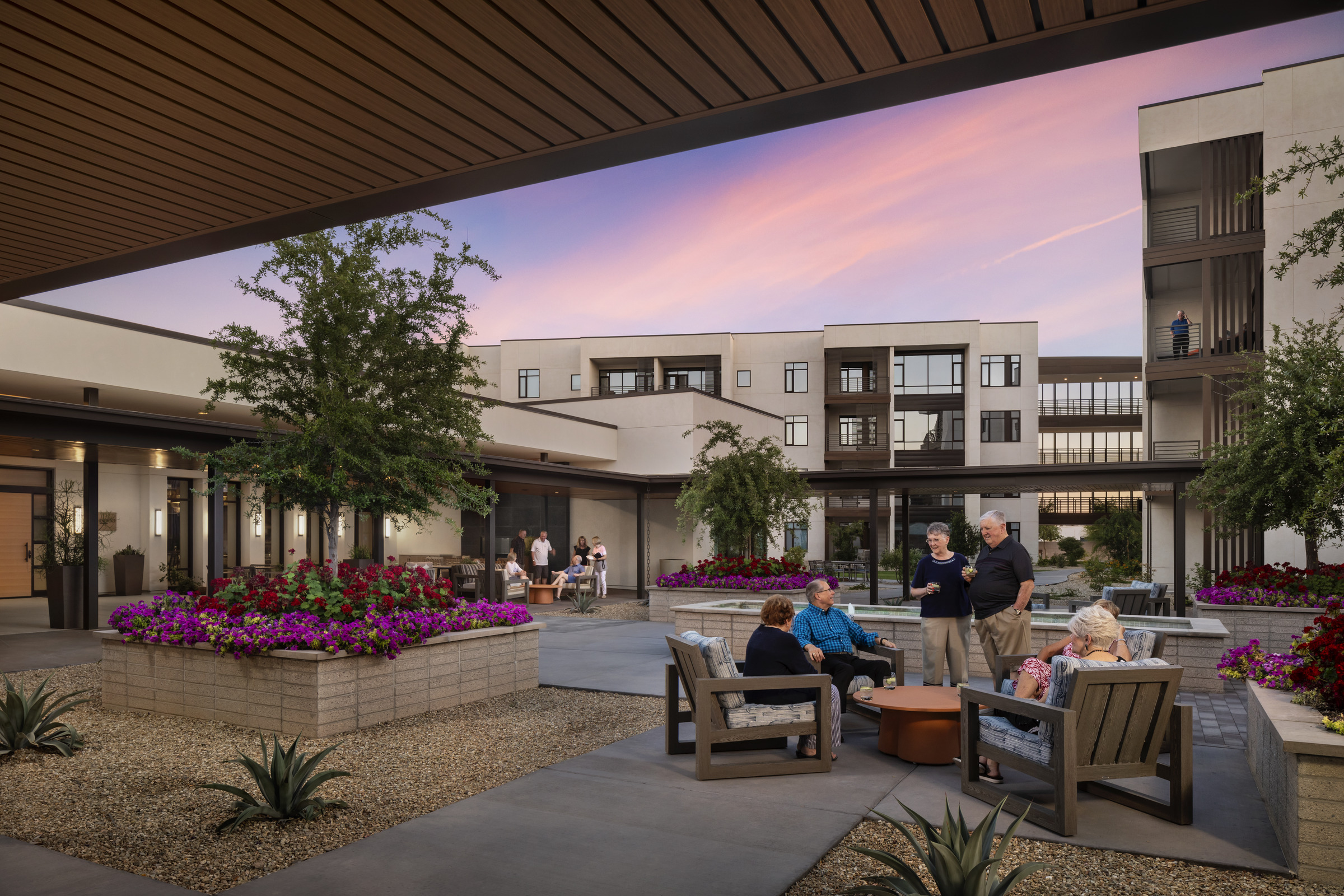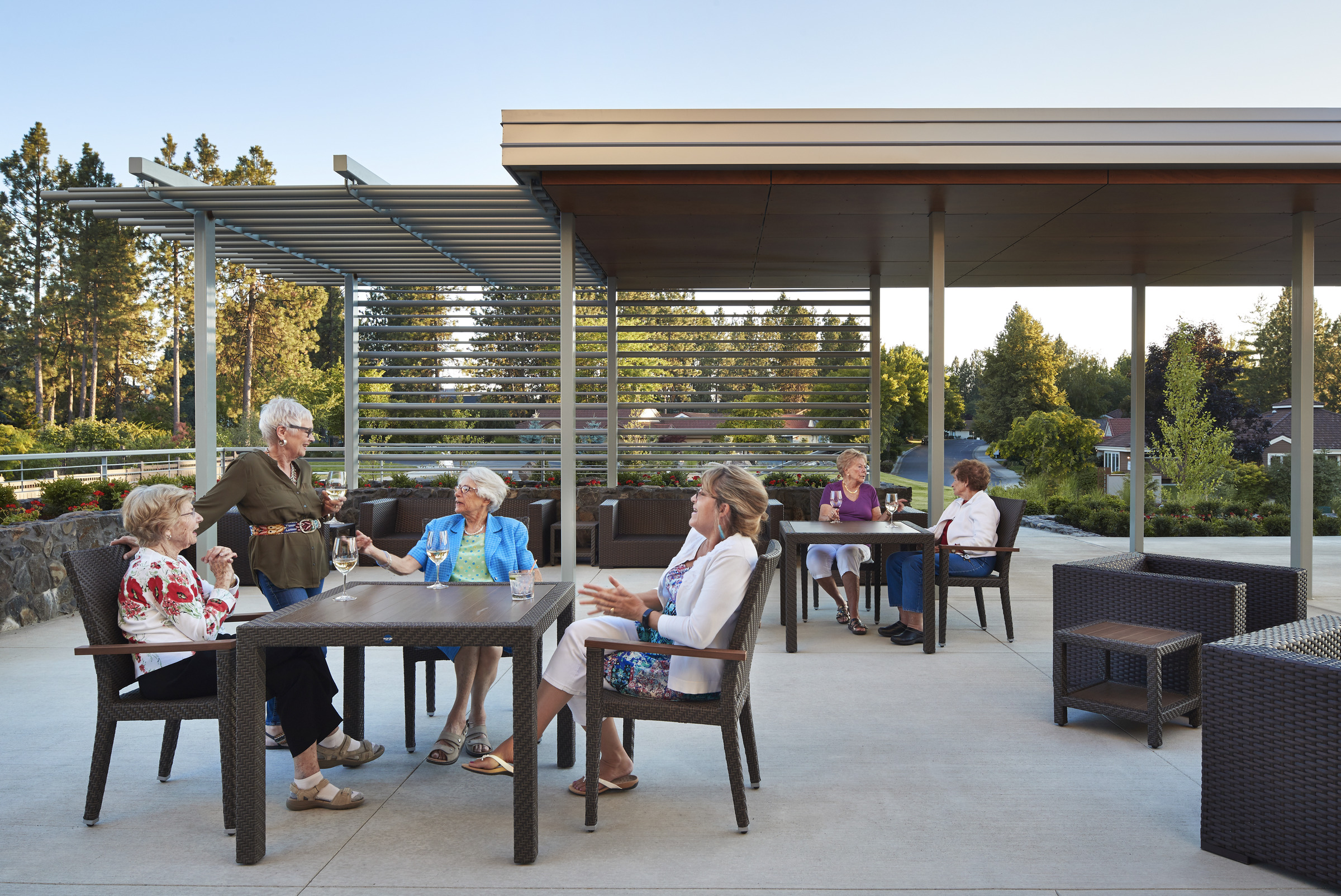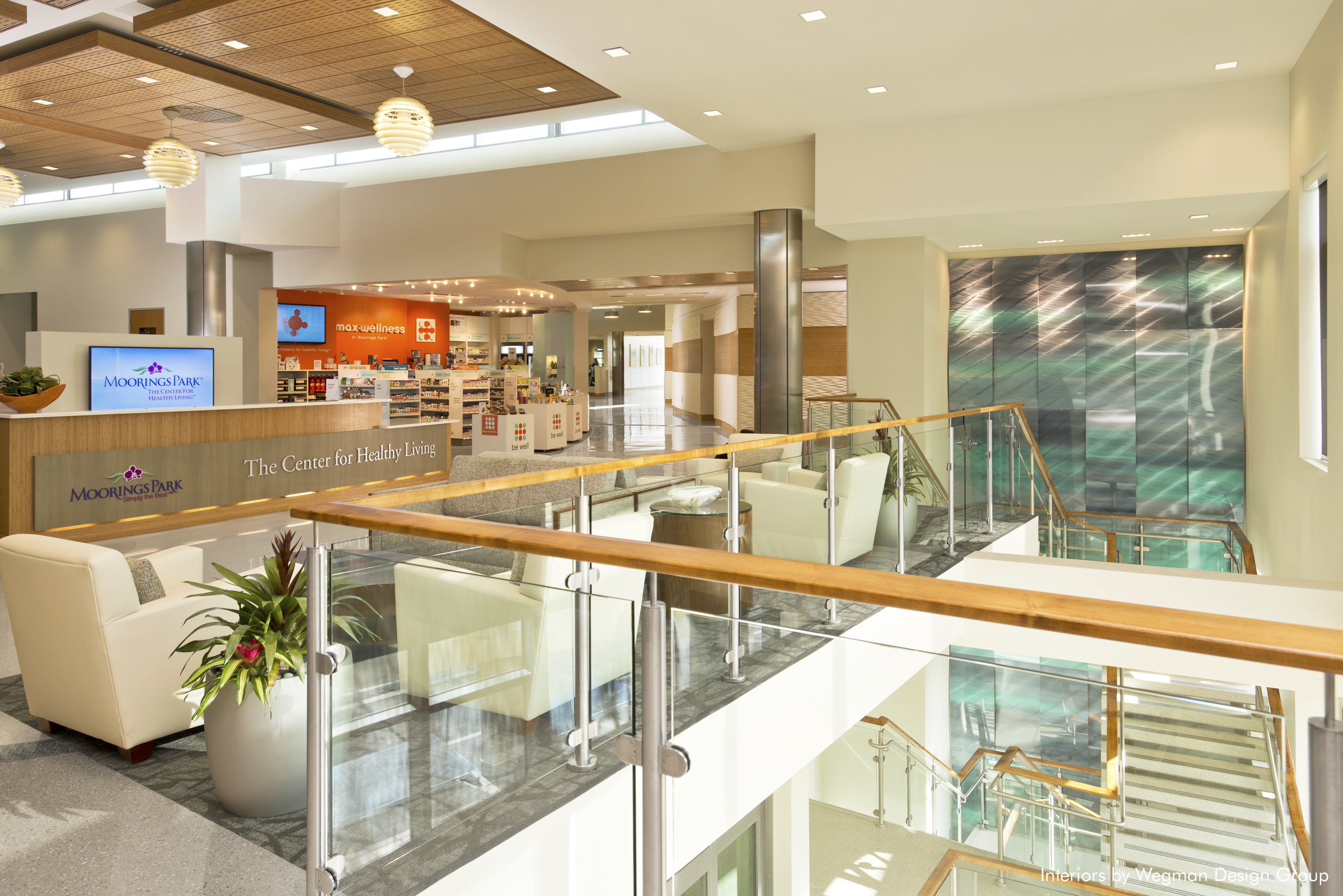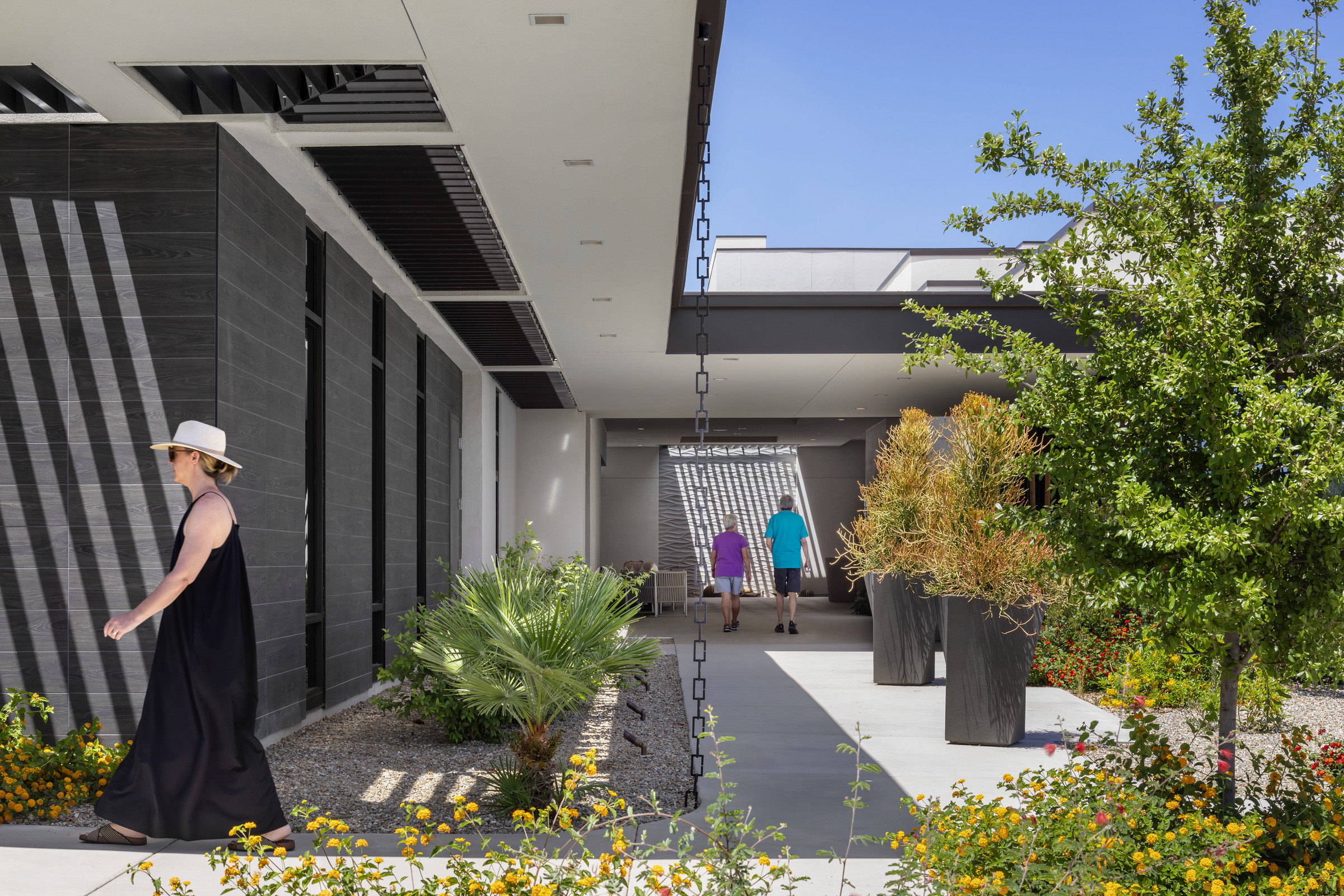
With a commitment to staying ahead of the curve, Royal Oaks in Sun City, AZ, addresses important aspects of the community’s future in its master plan, including creating a distinctive, cohesive campus; reinforcing the resident-centered culture; enhancing the employee experience; and improving flow between indoor and outdoor spaces. Photograph by Andrew Rugge / Copyright Perkins Eastman
Resilience and disruption: Participants mentioned these two words most consistently in our 2021 survey, The State of Senior Living: An Opportunity for Change, where more than 200 senior living leaders commented about the market’s outlook and overall health. While there was consensus from respondents that the sector is healthy in the long term, it was clear there was disparity in how the pandemic affected individual communities. Some felt minimal impacts, while others suffered tremendously. Luck and geography likely played a part in some of this variance, but foresight and good planning also had significant impact. These findings got us thinking: Are we looking at a future of continual disruptions? What can senior living operators do to be more nimble and resilient, both from the perspective of building design and community structure?
Other disruptors and disasters are certain to follow on COVID-19’s coattails. These disruptions may come from many different sources – the natural world, such as weather events; market disruptions; or even changing consumer behaviors and preferences. Disruptions may be acute or chronic, and many of them could happen at the same time. Our 2019 Clean Slate Project research identified potential large-scale disruptions to the senior living industry in the next ten years; they include climate change, technological advancement, changes in reimbursements, and new entrants into the market, among others. Many of these disruptions are already occurring and, of course, there are many other unforeseen possibilities.
To be prepared for these possibilities, communities need to shift focus from past and present conditions to the future. We need to act like futurists who continuously think about readiness. Futurists consider all the implications and prepare for them. For senior living communities, this perspective requires a call to action for operators to embark on resilience planning that will provide safer and more marketable communities.
What is a Resilient Senior Living Community?
Resilience is defined as the “ability to anticipate, prepare for, and respond to hazardous events, trends, or disturbances.” It’s also about lessening risk by mitigating potential disruptors before they happen. Developing resilience is both complex and personal. It involves a combination of inner strengths and outer resources, and requires a concerted effort. It’s not something that just happens; it takes planning and developing coping skills and tools.
To prepare for the future challenges, a senior living community needs to be ready to pivot with changes in consumer preferences and expectations, financial conditions, and the physical environment. Communities that are adaptive in this regard come with many benefits: They’re inherently safer for both residents and staff; they’re less exposed to financial risk; and they may even see a decrease in operating costs. Flexibility is also a marketing opportunity for potential residents and their adult children. A resilient senior living community is one that can offer an infallible value proposition: We will keep you safe despite what changes may come.
Bolstering Senior Living’s Core Tenets and Responding to Changing Consumer Preferences
While occupancy rates during the height of the pandemic were somewhat volatile across all levels of care, they’ve bounced back significantly. Respondents to our survey overwhelmingly reported that the sector’s long-term outlook is positive as long as they stay true to their core tenets – safety and security and the opportunity to live a social and engaged life in a true community.


